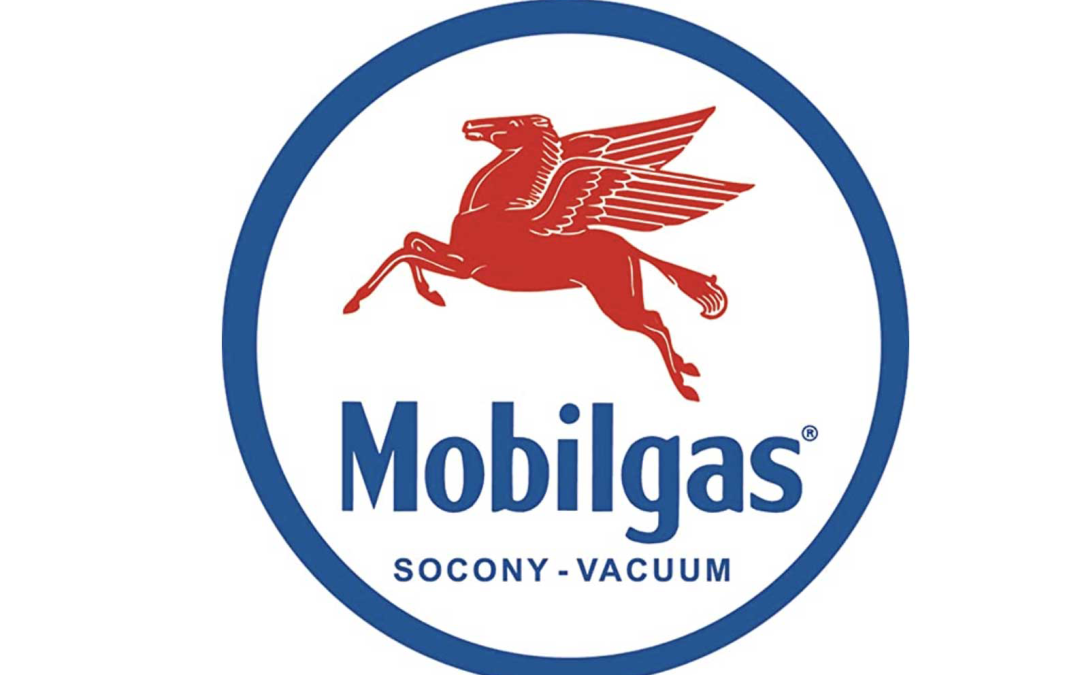A metal sign advertising Mobilgas from the company that would later become Exxon Mobil. The company used the mythological winged horse Pegasus on most of its advertising and logos. (Image courtesy of eBay)
May 2023
Cover Story
Fill ‘er up!
Oil and gas collectibles remain popular with collectors
by Corbin Crable
Before you hit the road for your summer road trip, fill up with these facts on vintage gas pumps, gas stations, and rest stops.
The first gas pump was actually called a ‘kerosene pump’ and was invented in 1885 in Indiana by S.F. Bowser. Fuel was kept in large wooden barrels, and in the early days of the horseless carriage, you’d need to drive to the nearest general store to fill your gas tank, according to the El Segundo, Calif.-based Automobile Driving Museum. In the next decade, when the automobile grew in numbers within major metropolitan cities, Bowser added a hose to the pump he had invented; the general store clerk who dispensed the fuel would count the number of cranks they made with the handle – one crank dispensed one gallon – and he’d have to put his ear to the tank as it filled in order to determine when it was completely filled. By 1895, a clockface was added to the pump, which indicated how much fuel had been dispensed.
Fuel you can see
In 1915, the first visible gas pump design made its debut, featuring a large glass cylinder atop the pump, which moved gas from the storage tank into the cylinder. These pumps were used until the advent of electric gas pumps decades later.
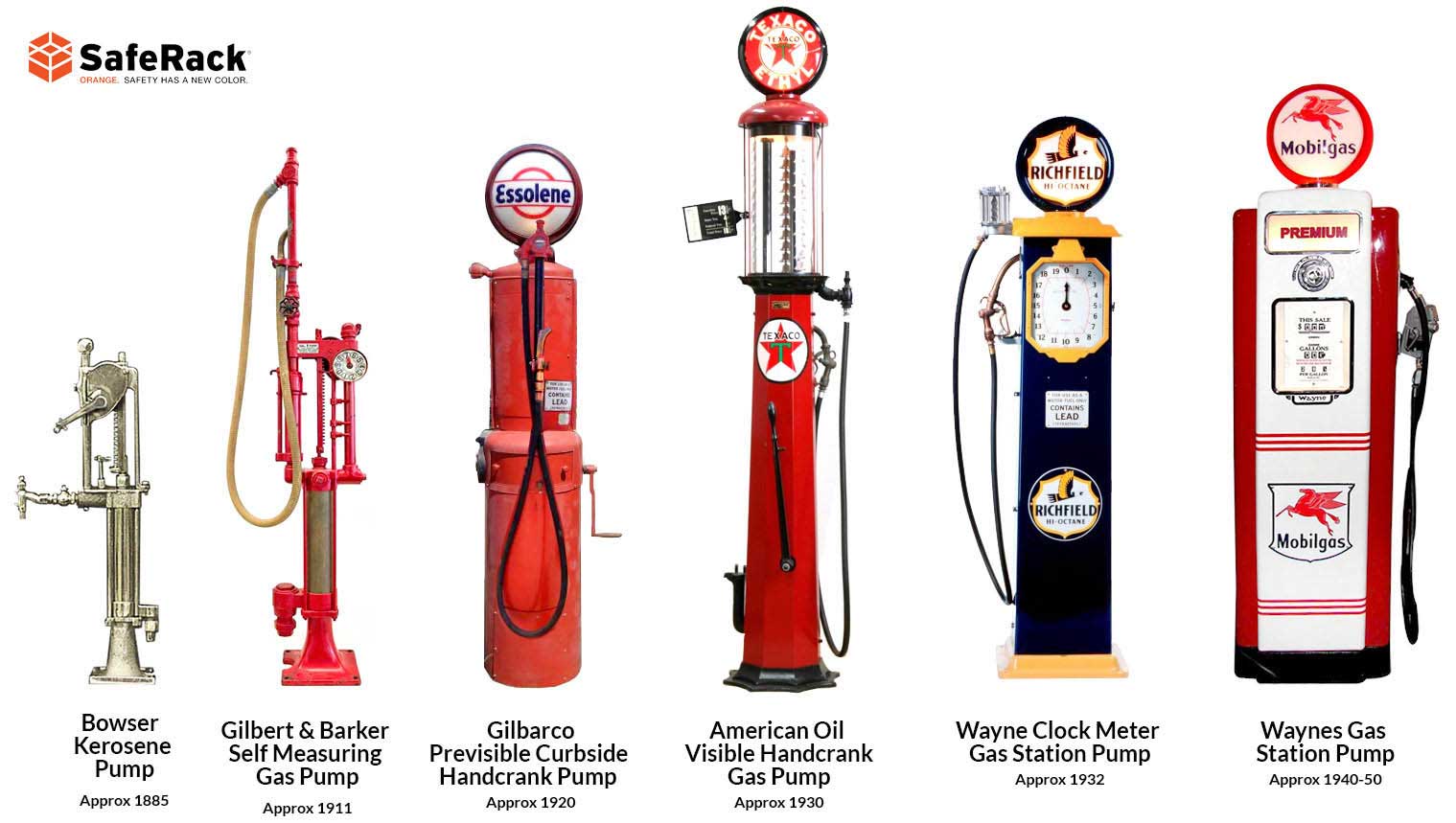
Gas pumps throughout the past century
A selection of gas pumps throughout the past century. (Image courtesy of Saferack)
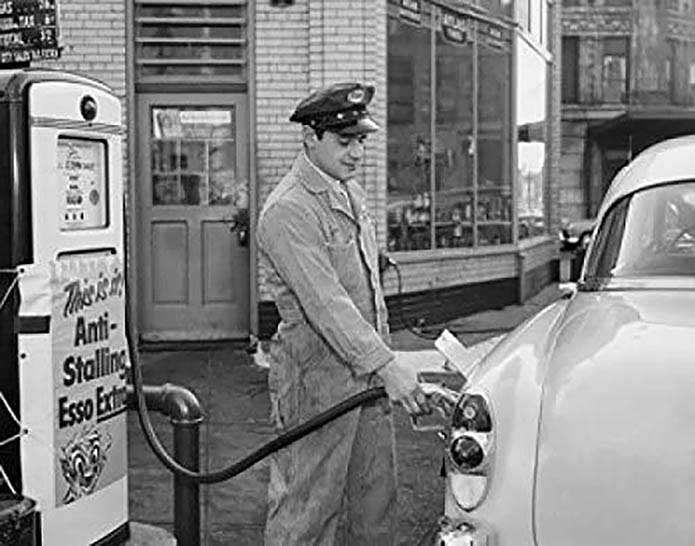
The aesthetic of the visible gas pump changed with the arrival of the Jazz Age in the 1920s and the Art Deco movement. The pumps began to be painted in bright, vibrant colors. By this time, as more cars were produced and hit America’s roads, the pumps, which usually could be found curbside, were moved farther away from the street and kept in storage pumps underground. By the 1930s, the visible pump was being made smaller in size, with a small turbine added to its interior. And by the conclusion of the decade, the electric pump made fueling one’s car a quick, easy process and also eliminated the need for the visible gas pump altogether.
Over the years, the visible cylinder was removed from atop the pump but replaced now by globes that also doubled as ad space. These remained in place until the 1940s. The decade of the 1950s gave rise to the box-style of electronic gas pumps, according to Saferack, a company that sells truck and railcar loading platform systems.
“The hardware was shorter, squarer in shape, and featured unpainted, stainless-steel surfaces,” according to Saferack’s site. “The top part of the pump was often larger, setting atop a narrower, tapering base. The units were often set up adjacent to one another in long rows, providing different types of fuels and services.”
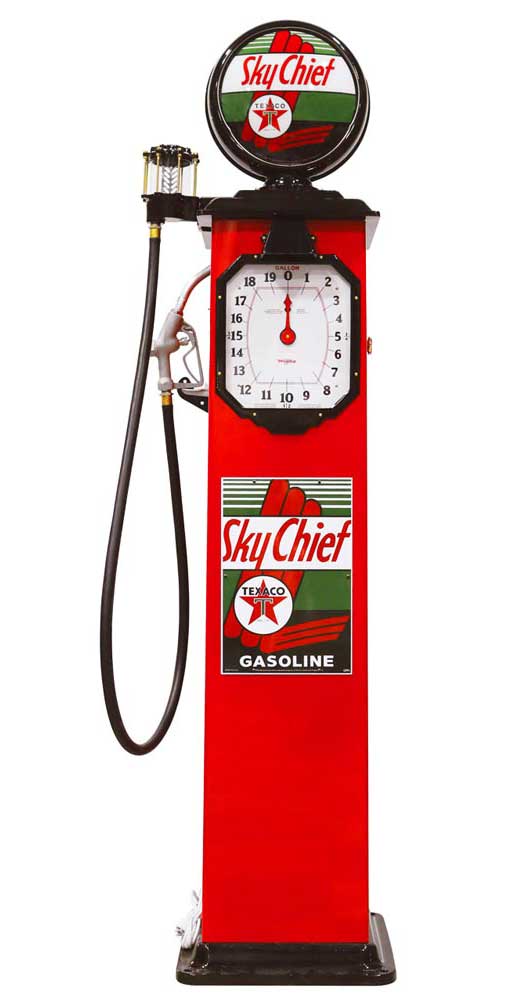
This Wayne 861 clockface pump
This Wayne 861 clockface pump, a reproduction of a 1932 model, sells for $2,300 at online vendor Gas Pump Heaven.( Image courtesy of www.gaspumpheaven.com. )
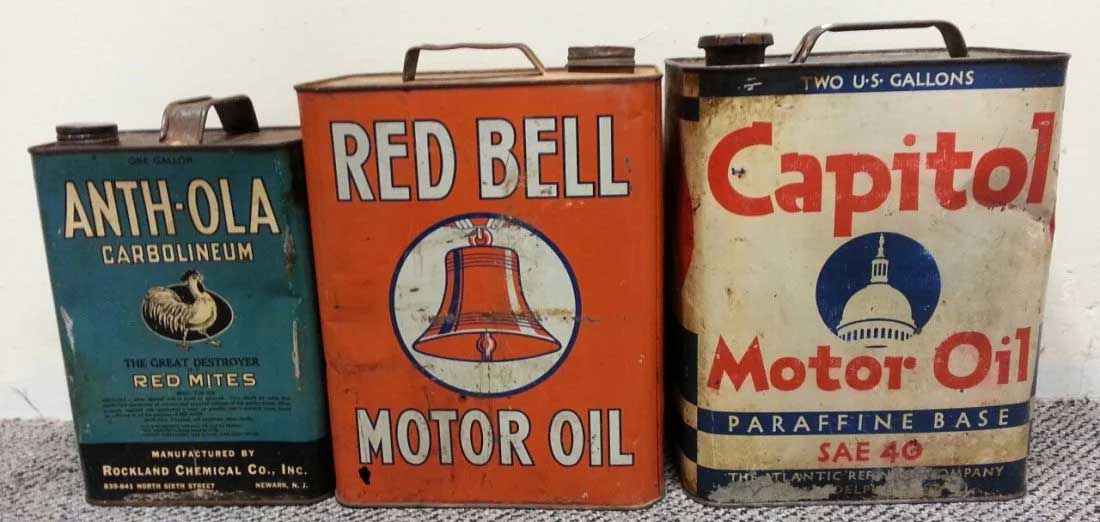
Vintage oil cans are affordable collectibles
Vintage oil cans are affordable collectibles for those just beginning their petroliana collection. (Image courtesy of Rockabilly Auctions)
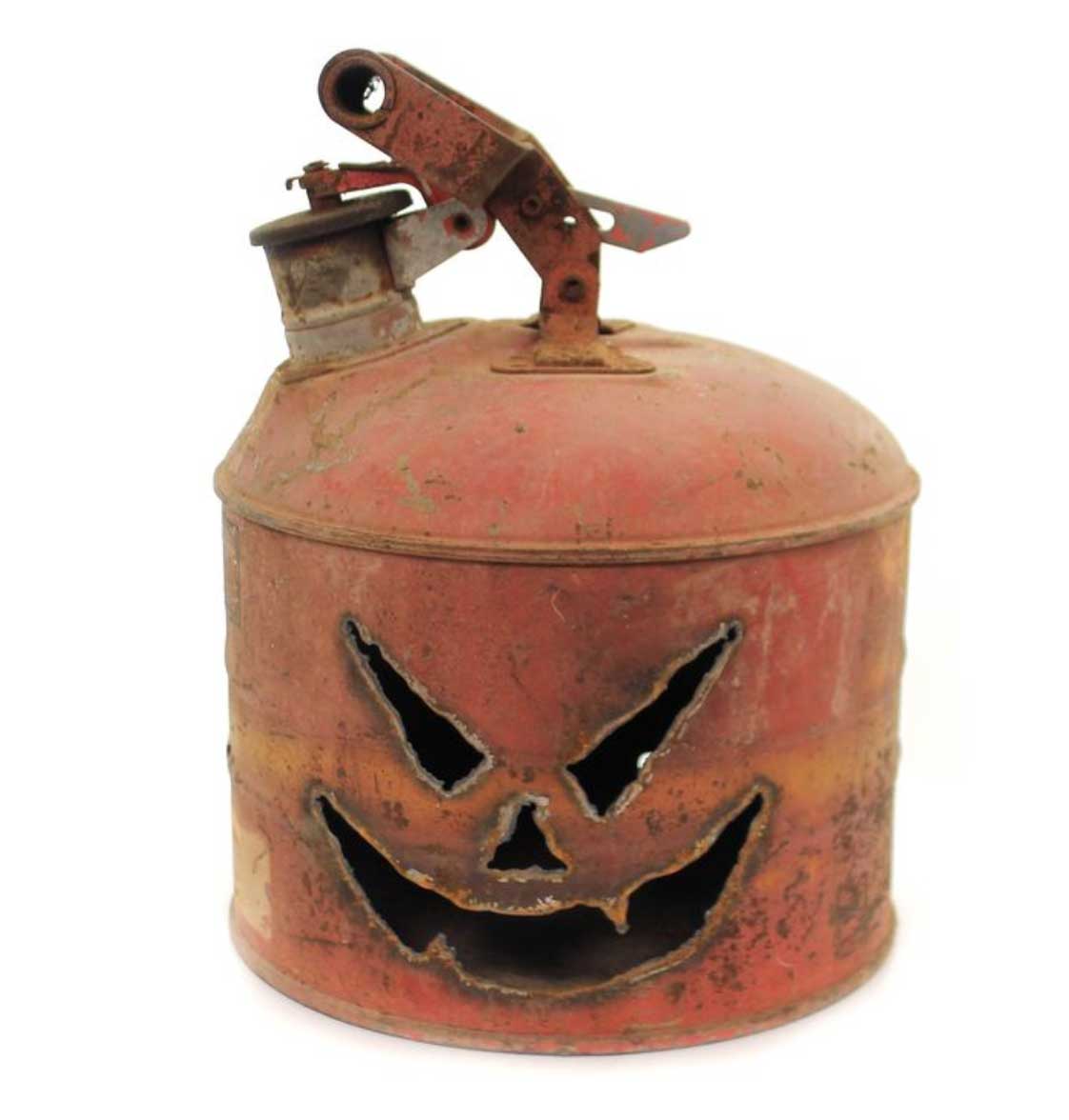
Repurposing a gas can as a jack-o-lantern
Repurposing a gas can as a jack-o-lantern is a popular new trend. Find a how-to videeo on YouTube. (Image courtesy of Pinterest)
Collecting is a gas
Several locations around the country claim to be the site of the first dedicated gasoline station (known in their early days as “filling stations”), including St. Louis, MO. It can generally be agreed, however, gas ceased to be sold in general stores around the turn of the century.
Don Sherwood, longtime collector of vintage gas pumps and other related memorabilia, offers as a resource his virtual gas station museum, www.vintagegas.com, which features images of some of the more impressive pieces in Sherwood’s collection. His collection of fuel-related collectibles often referred to as petroliana, also includes oil cans, metal advertising signs, and advertising globes, in addition to gas pumps themselves.
“’I get phone calls and emails all the time from people wanting to know how much their grandfather’s TEXACO pump is worth from 1935,’” Sherwood tells the Automobile Driving Museum. “But, as he describes, it’s difficult to tell because ‘TEXACO never made a pump. Most pumps were painted red by a manufacturer and then labeled by the pump distributor with the brand of gasoline it served. The retailer who purchased the pump may switch gasoline brands over the years, in which case it would be repainted and a new globe would have been installed on top.’”
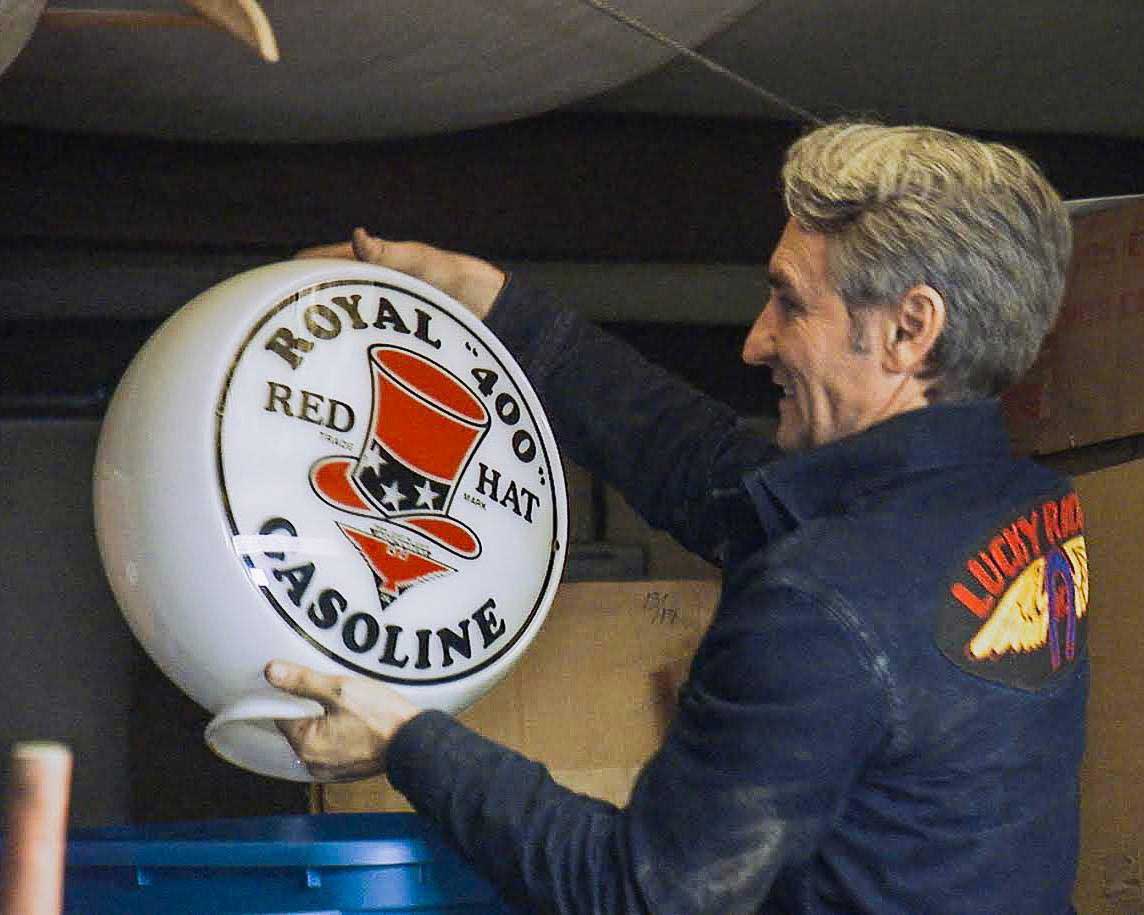
“American Pickers”
“American Pickers” star Mike Wolfe removes a glass globe from atop a vintage gas pump. “Glass gas globes are a killer piece of petroliana history,” Wolfe gushed in advance of a 2019 episode on petroliana and other related collectibles. (Image courtesy of Facebook)
Sherwood says he can’t name his favorite piece in his expansive collection, adding that every pump he owns is unique and a reminder of a simpler time.
“I don’t have a lot of money, but every piece I have I bought because I loved it,” Sherwood told the Automobile Driving Museum. “The hobby is alive and well.”
Wash your windshield, sir?
Unlike the gas pumps themselves, the features of vintage filling stations have mostly been lost to time. The first drive-in station, opened in Pittsburgh in 1913, and until as recently as the fuel crisis of the 1970s, many offered either minimum service – an attendant operates the gas pump for the motorist – or full service – in addition to pumping the customer’s gas, wipes windshields and windows, and checks the car’s oil level and tire pressure. And, unlike modern gas stations, these vintage filling stations didn’t include expansive convenience stores with every candy bar and snack imaginable. These quick stops were all about servicing your vehicle and getting back on the road, according to Greg Zyla of More Content Now.
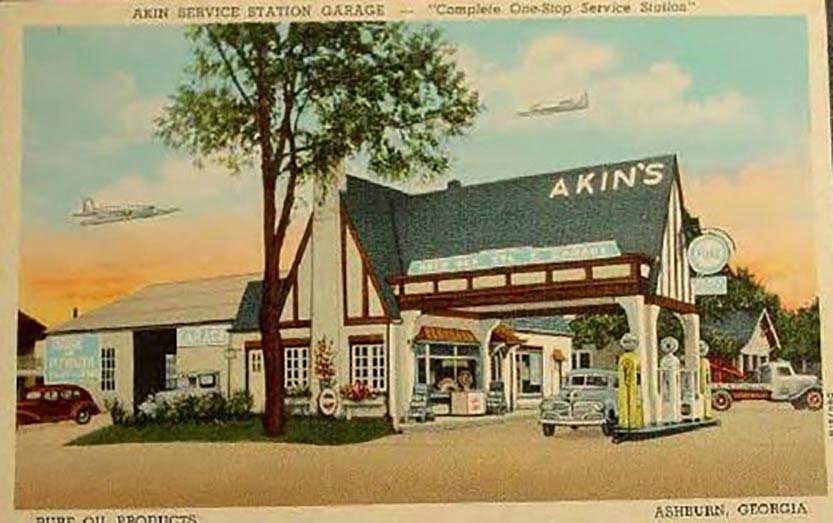
Akin’s Filling Station
An old postcard depicts a roadside Akin’s Filling Station. (Image courtesy of Pinterest)
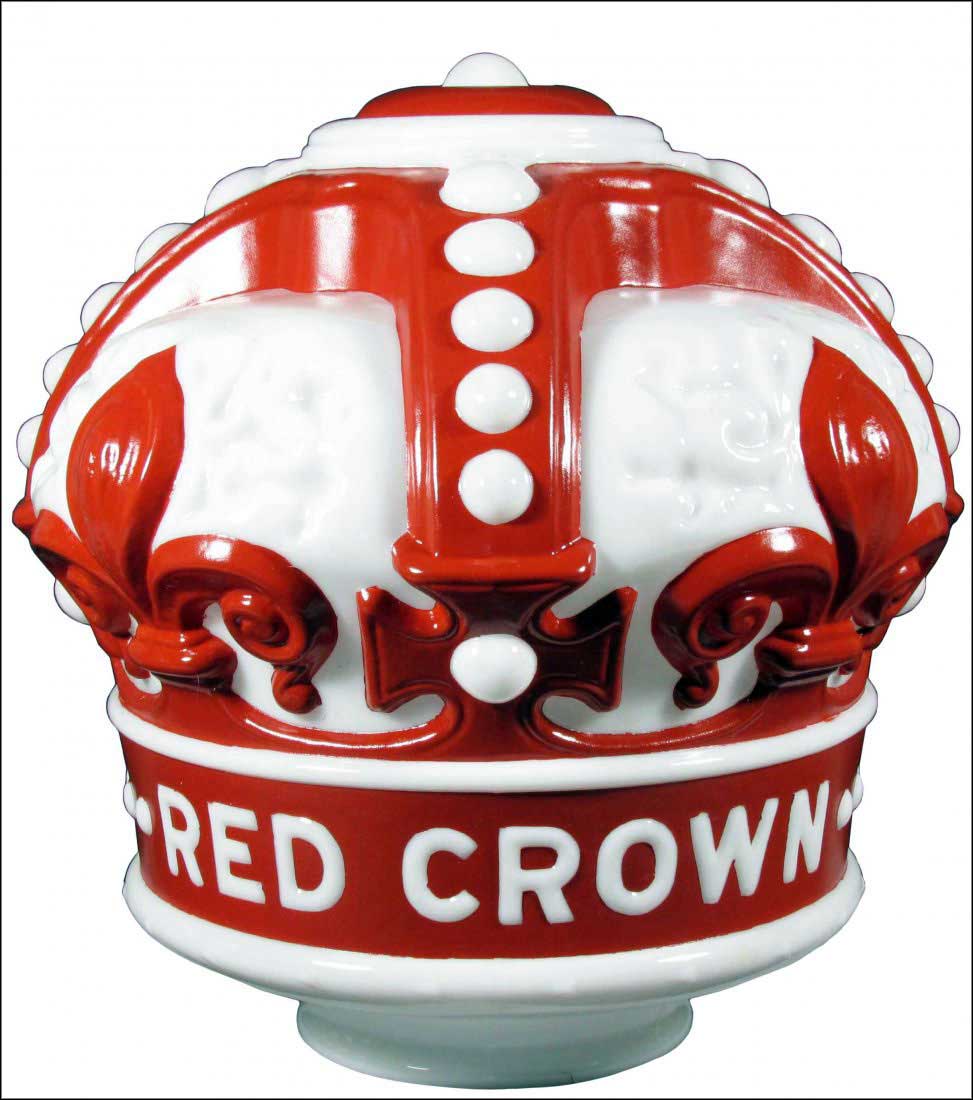
Circa 1940s Indiana Standard Red Crown gasoline globe.
Circa 1940s Indiana Standard Red Crown gasoline globe.
(Image courtesy of Shorpy)
“Unlike today’s gas station stores that are mostly eateries, the old-time gas station was a real service center offering specialized auto repair, tires, oil, batteries, and more,” Zyla wrote in a 2019 column for The Palm Beach Post. “The only things in common with today’s gas stations were restrooms and, at best, a small selection of gum, candy bars, crackers, and potato chips. Other than that, it was servicing your car and selling gasoline as the primary business plan.”
Though such service stations are extremely rare, they haven’t completely vanished from the American roadside. One still in operation in Olmos Park, TX, has been owned and operated by Greek immigrant Gus Velesiotis for nearly 30 years.
“A lot of people, they are busy. They have no time to check the oil. They have no time to check their tires,” Velesiotis told KSAT.com in 2018, with employee Joey Perez adding, “In the full service, we include the gasoline. We will check the tires for you. We will check all the fluids under the hood in order to be safe, clean the windshields as well — whatever our customers need.”
America goes highway bound
In postwar America, gas stations were big business, especially with the advent of the Interstate Highway System in 1956, connecting communities across the nation with greater speed and ease of transport. For the next two decades, the roads hummed with vehicles that zipped along thanks to the services offered and products sold at gas stations. Gas companies, including TEXACO, even took up the mantle of merchandising, producing gas station play sets for children. Those playsets remain available on online sites such as eBay and Etsy, with prices ranging from $20 or $30 to several hundred dollars.
By the time movie audiences howled at Steve Martin’s antics as a hapless service station employee in the 1978 comedy film “The Jerk,” the energy crisis of 1973 led to the shuttering of many full-service fuel stations; even more would close during the energy shortage of 1979. In less than a decade, Martin’s character’s job would become all but extinct. Despite this, the demand for petroliana remains high among collectors.
“Collecting petroliana is not only a hobby. It’s also a great way to invest in a piece of history,” according to the website for Richmond Auctions. “The value of petroliana has been steadily increasing over the years, and it is not uncommon for a rare or unique piece to fetch a high price at auction.”
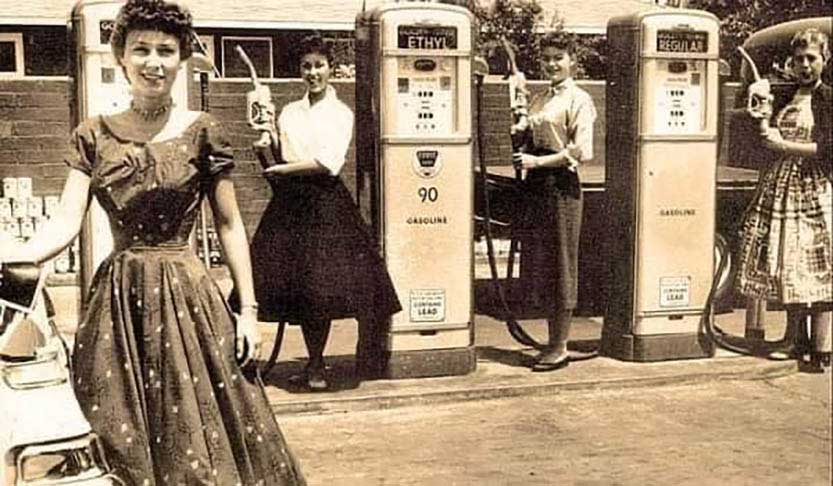
“Gas girls”
What better way to advertise your filling station than with lovely ladies? “Gas girls” pose at the pump in this midcentury photo. (Image courtesy of Facebook)
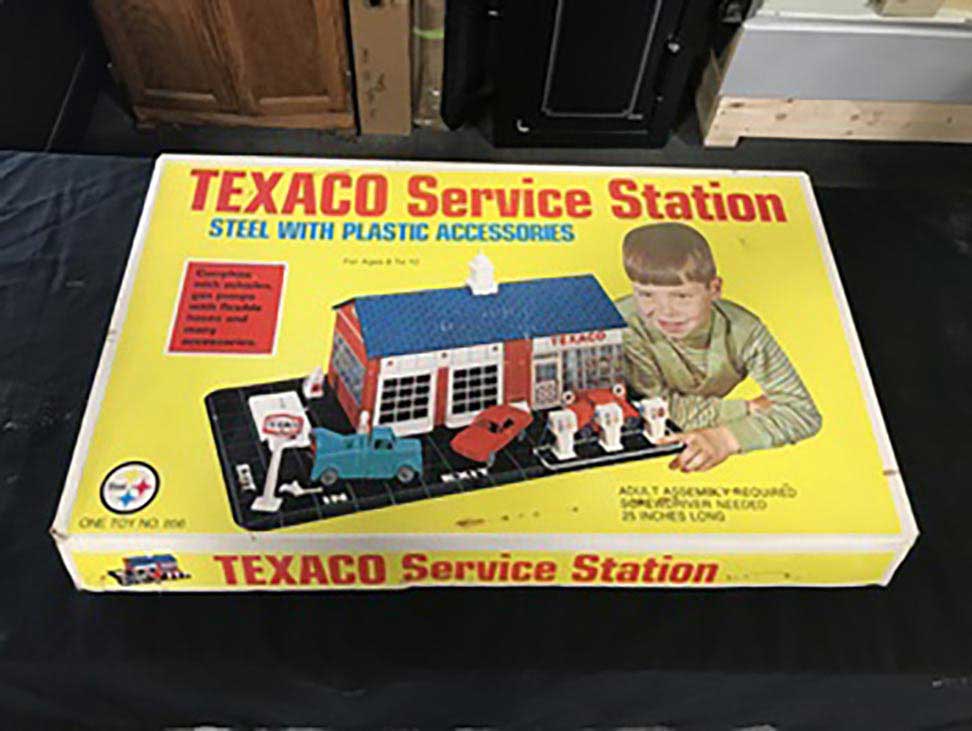
A toy service station
A toy service station, released by TEXICO in 1960. (Image courtesy of Collectors Weekly)


